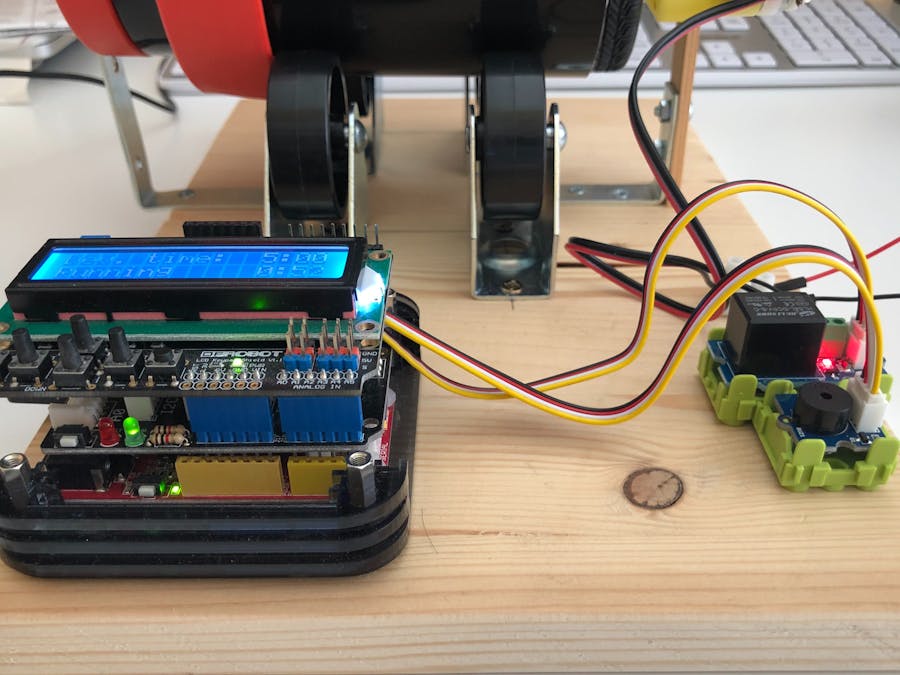#MonthlyWrap-up October: AIoT, LoRaWAN, OpenWrt, AI for Good, Raspberry Pi, ML, Zephyr, and More…
By Lily 3 years agoFor this entry, we’ll cover 3 breaking news that you might want to know about, 6 awesome projects from the community, 4 stories on how to deploy IIoT Solution to solve real-world issues, 6 technical write-ups, 1 successful manufacturing case, and 2 prototyping news. Hot topics such as SDGs, LoRaWAN, OpenWrt, ML, TinyML, Raspberry Pi, AIoT, Raspberry Pi, and more will be also covered.
Hey community,
At the beginning of the exciting November (which our Maker Faire Shenzhen falls into), please allow me to introduce our recap of October. For this post, we’ll cover 3 breaking news that you might want to know about, 6 awesome projects from the community, 4 stories on how to deploy IIoT Solution to solve real-world issues, 6 technical write-ups, 1 successful manufacturing case, and 2 prototyping news. Hot topics such as SDGs, LoRaWAN, OpenWrt, ML, TinyML, Raspberry Pi, AIoT, Raspberry Pi, and more will be also covered.
Now, please enjoy our October Monthly Wrap-up, have a good read.
 News that You Might Wanna Know️
News that You Might Wanna Know️
01 Collaboration of Stanford University x Seeed: Open Source Haptic Device for Affordable Haptics Education for All
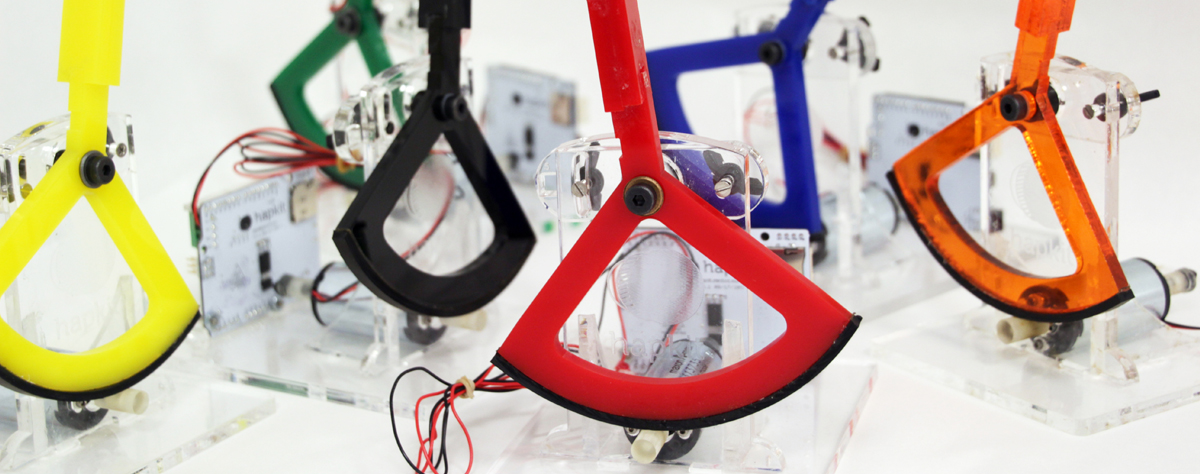
In 2012, Prof. Allison Okamura from the School of Mechanical Engineering, and Prof. Paulo Blikstein from the School of Education at Stanford University came together to devise upgraded educational haptic paddles used for teaching system dynamics, control theory, and mechatronics concepts. As a result, they created a DIY electronic kit called “#Hapkit” for on-campus courses, online courses, and educational research. For this Project, Seeed designed and made an all-in-one controller board called “Hapkit Board” to reduce the costs on microcontrollers and amplifications that support the Hapkit. 
02 Partnership: Zephyr Project Now Supports Seeed Studio Wio-E5 Dev Kit
We are excited to announce that our Wio-E5 Dev Kit is now supported by The Zephyr Project. By working with Zephyr, developers and product manufacturers have the tools for solving embedded RTOS challenges with Wio-E5 Dev Kit out of the box. Learn more HERE.
03 Event Recap: Eric Pan’s Speech Recap on Decentralized and Open Innovation for SDGs at UN ITU’s “AI for Good” Event
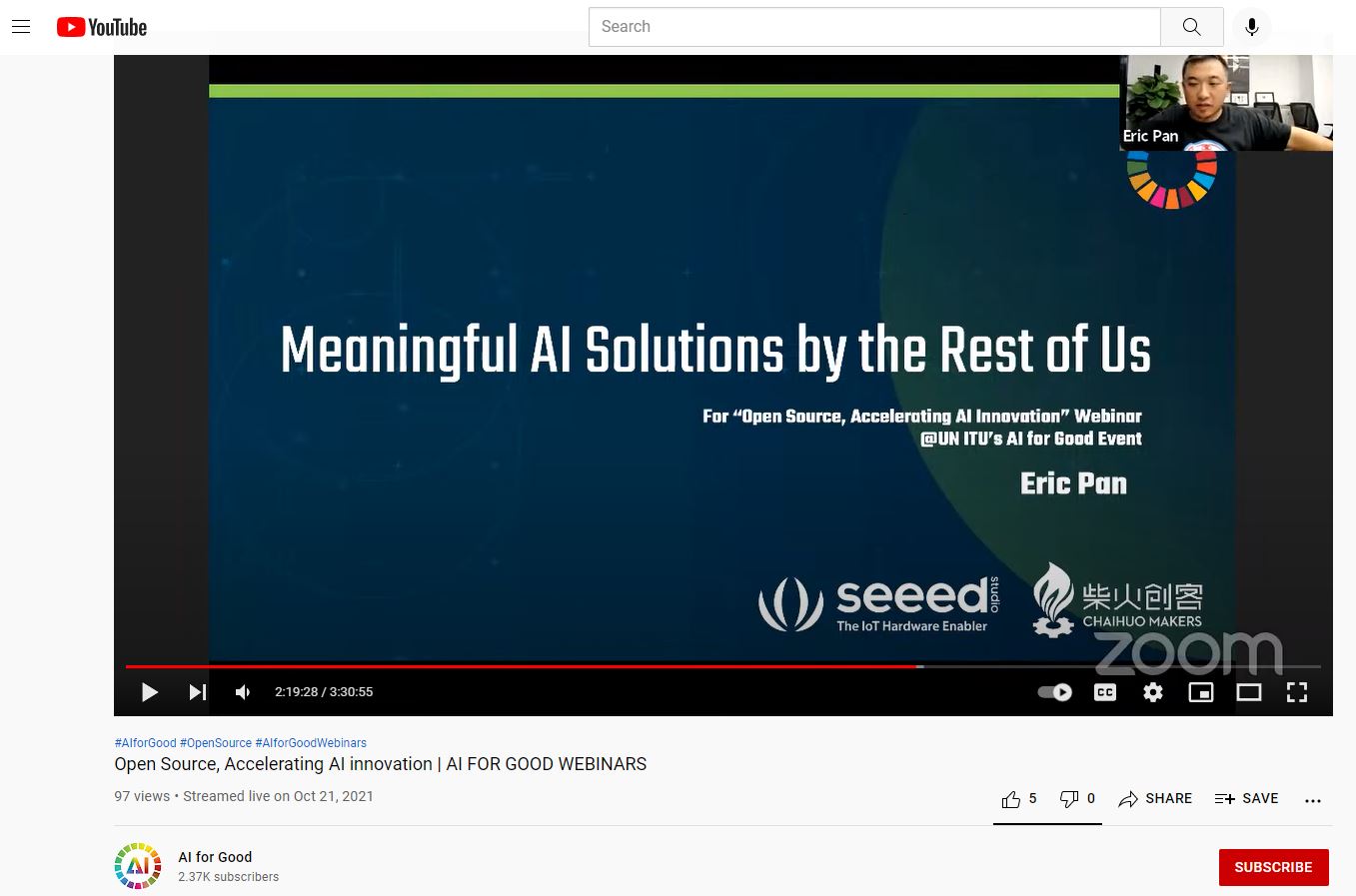
At the beginning of this year, the UN’s International Telecommunication Union (ITU) organized a series of annual webinar events known as “AI for Good”. A thematic webinar on “Open Source, Accelerating AI Innovation” was held online on October 21st (hosted by ZTE, Linux Foundation, and Peng Cheng Laboratory), for which Seeed Studio’s Founder and CEO, Mr. Eric Pan, had the honor to participate as a guest speaker. Eric shared his expertise and insights on AI innovations for SDGs, with his speech title of “Meaningful AI Solutions by the Rest of Us”. He shared how open source hardware has enabled global innovators to resolve glocally-entrenched sustainability challenges, specifically by deploying the latest IoT and AI technologies. 
 ️ Community Project Spotlight
️ Community Project Spotlight
(based on our LinkedIn impressions)
01 How to Setup an Intelligent Meeting Room Reservation System on reTerminal by Lakshantha
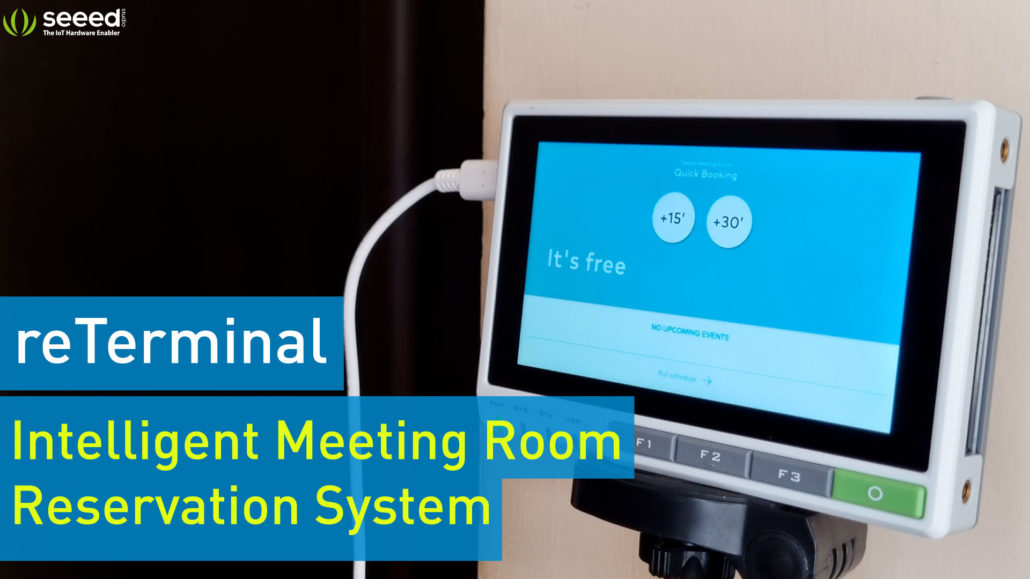
This tutorial will talk about how to setup an Intelligent Meeting Room Reservation System on the reTerminal. Basically, reTerminal LCD can be used to create meetings and visualize the current meeting status. Also, it is linked with a cloud calendar as well so that it syncs all upcoming meeting information and visualize them on the display. Click to read the tutorial.
02 Learn TinyML using Wio Terminal and Arduino IDE #6 Speech recognition on MCU – Speech-to-Intent by Dmitry Maslov
A traditional approach to using speech for device control/user request fulfillment is first, to transcribe the speech to text and then parse the text to the commands/queries in suitable format. A more efficient way is to directly parse user utterances into actionable output in form of intent/slots. In this article I will share techniques to train a specific domain speech-to-intent model and deploy it to Wio Terminal. Here you can check the tutorial.
03 Blood Oxygen & Heart Rate Meter by John Bradnam on Hackster
John Bradnam decided to make the project Blood Oxygen & Heart Rate Meter. In detail, he showed us how to use the MAX30102, Seeeduino XIAO and 1.14in color display to build blood oxygen and heart rate meter. 
04 LoRa®-Enabled Node with AIoTs GPS on Wio Terminal on Seeed Wiki
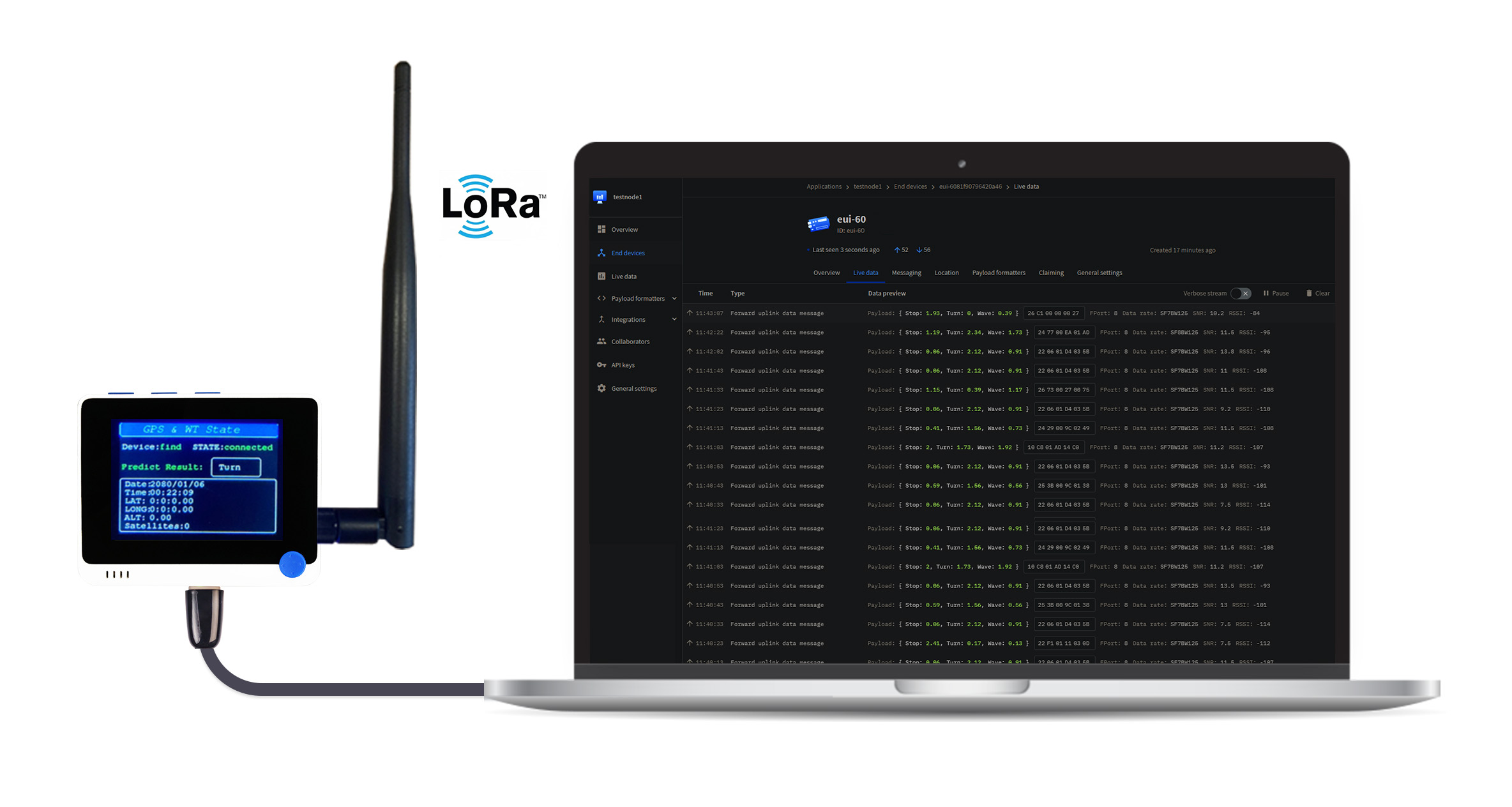
The AIoTs GPS & state tester is basic on Wio Terminal Chassis-Wio-E5 and GNSS to develop. It compares with the traditional IoTs has more conciseness and intelligence. In this project, it will be used a built-in 3 axis accelerometer sensor and the neural network algorithm to build up an intelligent recognition system. Based on the movement of Wio Terminal, it can show you its state in real-time. Generally, the example project here included three trained states which are Stop(WT idle state), Turn(rolling-over WT device), and Wave(take WT to wave your hand). It is encouraged that you go to Edge Impulse website to add more training action. 
05 35mm Film Tank Motor Roller by Griff on Hackster
This project was shared by Griff on Hackster.io.In his tutorial, he demonstrate how to develop a roll of Fomapan 200 black and white film using Foma’s chemistry, a JOBO 1520 UniTank and a DIY motorised roller. It used Seeeduino, Seeed Grove-Relay, Seeed Grove Base Shield, etc, as hardware components, which is an easy to construct Arduino controlled, motorised roller for the Jobo brand of film development tanks. 
06 Buddy – A personal home office assistance by Mithun Das
Coronavirus outbreak has put our lives upside down, creating new norms. The most obvious impact of COVID-19 on the labor force is the sharp increase in employees working remotely. How can we apply technology to build up a productive working environment at home? Mithun Das created a smart device called Buddy, which collects temperature, humidity, light, human presence data, calculates productivity, and helps break sedentary. This personal home office assistance is built on Amazon Web Services (AWS) Edukit and a bunch of Grove sensors.
 New Open-Source Products & Updates
New Open-Source Products & Updates
01 New Product: SLAMTEC RPLiDAR S2: New generation TOF radar with ultra-high standard sampling and precision for industrial scenarios

RPLIDAR S2 is a quasi-industrial TOF radar with an IP65 protection level. It has more stable and reliable ranging performance when detecting long-distance objects, switching between black and white objects, and strong direct light objects. Check out more details and the applications here.
02 Product Review of Wio Terminal by Alex Glow on Hackster TV

“Let’s demo Edge Impulse machine learning on Seeed’s new Wio Terminal! It’s an all-in-one, fully open-source IoT device with numerous sensors and inputs. Add Arduino code generated by Edge Impulse, and you can train and deploy your own custom classification models.” by Alex Glow at Hackster.io 
03 Product Review of Spartan Edge Accelerator Board by Whitney Knitter on Make:

The Spartan Edge Accelerator Board (SEA for short) is an FPGA development board with a standout form factor that we all know well: the Arduino shield. But those familiar with FPGAs might ask “Why would I want this? Aren’t Arduinos and FPGAs on the opposite sides of both the complexity and ease-of-use spectrums?” Check out Whitney Knitter‘s review of Seeed Spartan Edge Accelerator Board on Make:, and you might all clear out. 
04 Product Review by Stephen Smith: Playing with the Seeed Studio Grove Starter Kit for the Raspberry Pi Pico

Building and programming microprocessor projects can be intimidating, involving soldering small fiddly wires and then writing programs in C and Assembly Language. But today’s article can help you learn and prototype DIY projects easily, it shared on Stephen Smith’s blog, which shows how the Grove Starter Kits for the Raspberry Pi Pico simplifies the process by replacing soldering with simple standard connectors and then combines this with simplifying MicroPython high-level classes to make the programming simpler. 
05 Smart Home with Home Assistant on OpenWrt
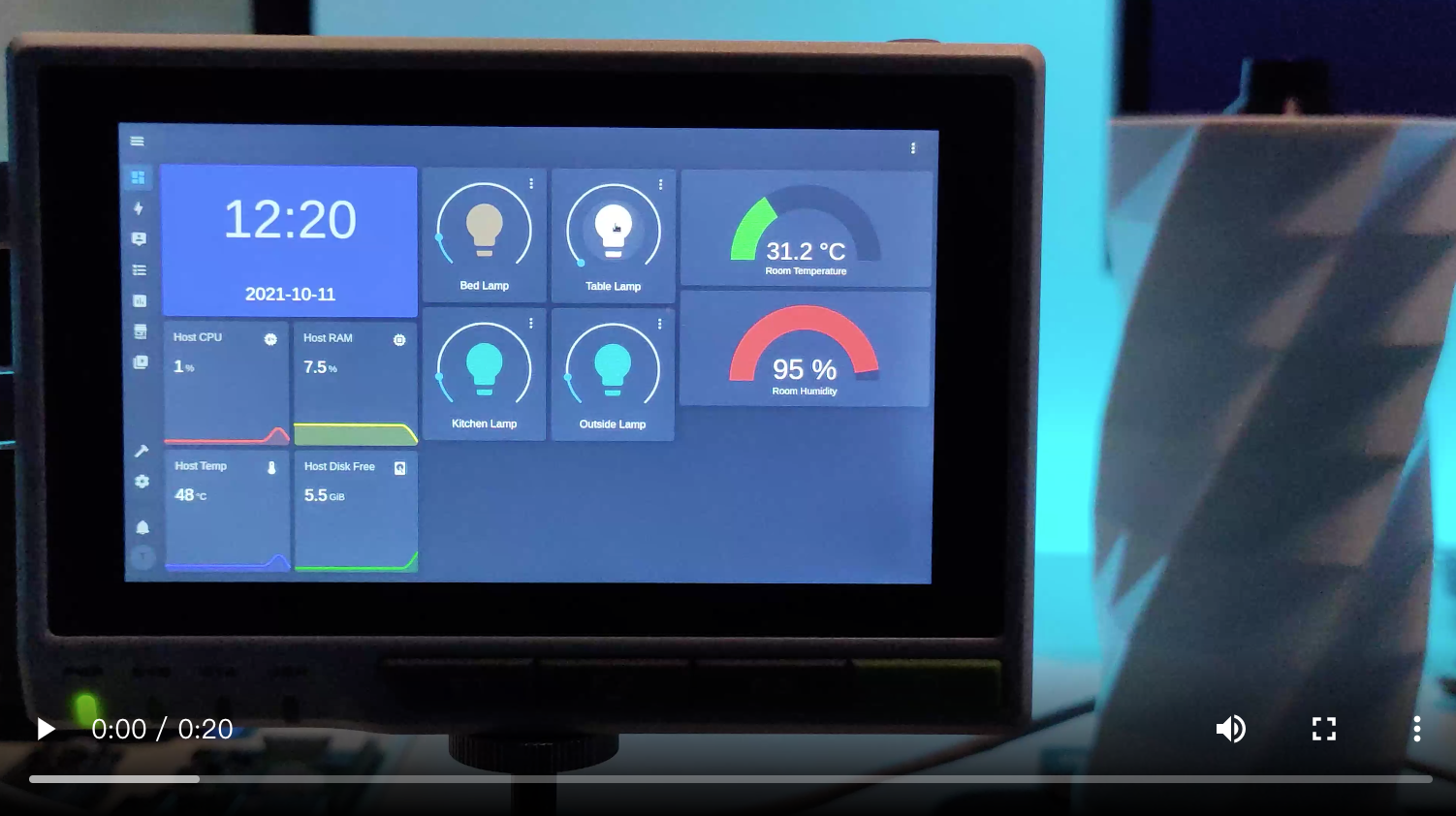
This technical update blog will talk about how you can control your smart home appliances using Home Assistant running on the OpenWrt System by Seeed. Here I will explain how you can set up everything step-be-step. Also, I will use the reTerminal LCD to view the Home Assistant dashboard to visualize the connected devices. Check it out here.
06 Run SDR Software on reTerminal and Visualize on LCD

This blog will talk about how you can easily install SDR software on your reTerminal so that you can visualize radio signals on the reTerminal LCD! Also, this only works for RSP family of SDR receivers which are manufactured by SDRplay and this is because the software we are going to install is offered by them. We will be able to easily install the SDRplay-specific software on top of the existing Raspberry Pi OS installation on the reTerminal just by running a few scripts. Finally, we will run CubicSDR software which is used to capture the radio signals, and then analyze the signals as graphs on the reTerminal LCD! Check it out here.
07 Smart Home with Node-RED on OpenWrt

This blog will talk about how you can control your smart home appliances using Node-RED running on the OpenWrt System by Seeed. Here I will explain how you can set up everything step-be-step. Also, I will use the reTerminal LCD to view the Node-RED dashboard to visualize the connected devices. Read more details here.
08 Fast(er) Machine Learning Inference on Raspberry Pi SBC – Four optimization techniques
With this update, will walk you through the list of four techniques, that can be helpful when aiming for running real-time model inference on Raspberry Pi 4. The techniques include designing smaller networks, Quantization, Using optimized kernels and Pruning and sparse inference. Read the details here.
 IIoT Solutions
IIoT Solutions
01 SenseCAP LoRaWAN Case: Sweet Melons Grown at Smart Agriculture Demonstration Park in Beihai, China
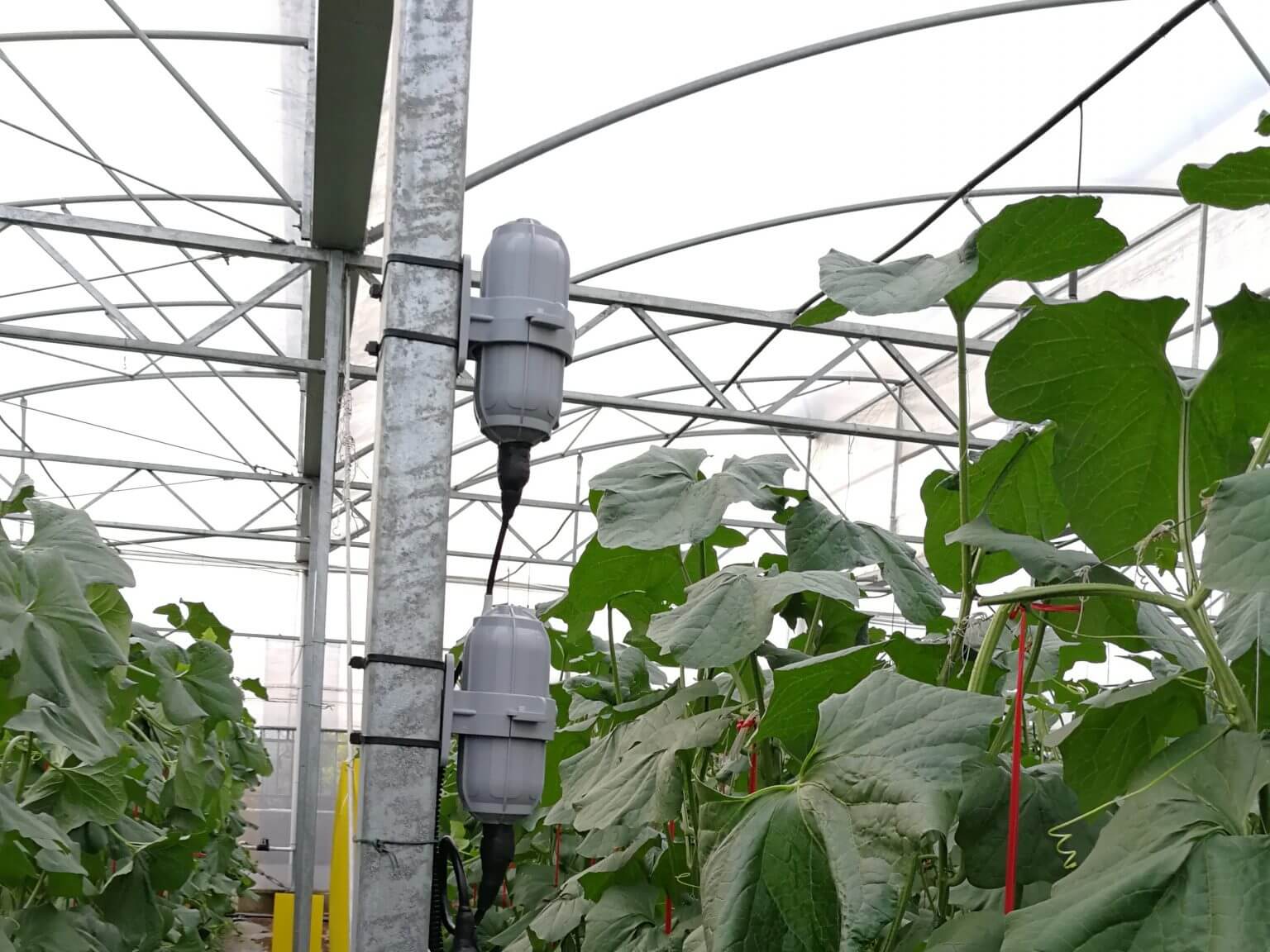
Smart Agriculture Demonstration Park Project deployed Seeed’s SenseCAP LoRaWAN gateway and sensors for precision agriculture in a greenhouse of sweet melons, which is located in Beihai City of Southern China. Through the IIoT solution, improved resource efficiency and economic productivity have been observed, through which the Project seeks to achieve the UN’s SDGs 13, 3, 17, 10, 11, 9, 8, 2, 1, 4, 6, 7 and 12. Learn more here.
02 5 Steps to Connect LoRaWAN Sensor to Helium with Datacake Templates

With more and more people joining to build the People’s Network by deploying Helium Inc gateways globally, there has been a rapid expansion of the Helium network! And we are very happy to be a part of this journey. There have been 30k+ SenseCAP Helium gateways onboarded to the Helium network within 3 months. Meanwhile, we’ve seen an increasing need for sensors to be used on the Helium network. Hence, we’ve been working with Datacake to create templates to add SenseCAP LoRaWAN sensors to the Helium network conveniently. Follow this tutorial, and you will be able to connect a LoRaWAN sensor to the Helium network with Datacake templates and start collecting data within only 5 steps! 
03 SenseCAP LoRaWAN IIoT Solutions for OPEN Global IoT Education Project for Future Jobs and Resilient Livelihoods
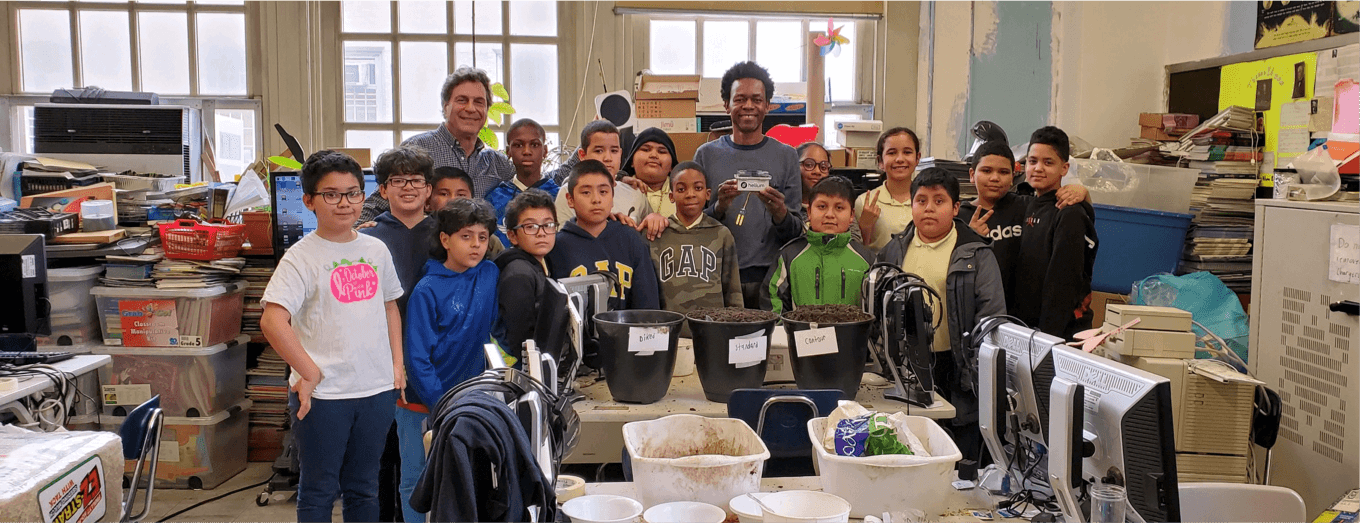
In the OPEN Global IoT Education Project, we collaborated with ONE PLANET EDUCATION NETWORK(OPEN) and Helium to deploy in order to help solve diverse local challenges for children and local communities towards a sustainable and resilient world. Through their participation, they are self-empowered to learn specific skills to prepare for newly emerging jobs in the future. More details here.
04 Tutorial: The Things Network new Azure IoT Hub integration

This interesting article was shared by Sander van de Velde, the topic there is about The Things Network new Azure IoT Hub integration. In detail, it will talk about the main features of the Azure IoT Hub Integration, which is a first-class member of The Things Network backend. And it also guides us to know the ARM template deployment, demonstrates how to use the SeeedStudio Sensecap sensors as device management.
05 SenseCAP LoRaWAN in Triticale Farming: Precision Agriculture and Sustainable Livelihood Development in Dingzhou, Northern China
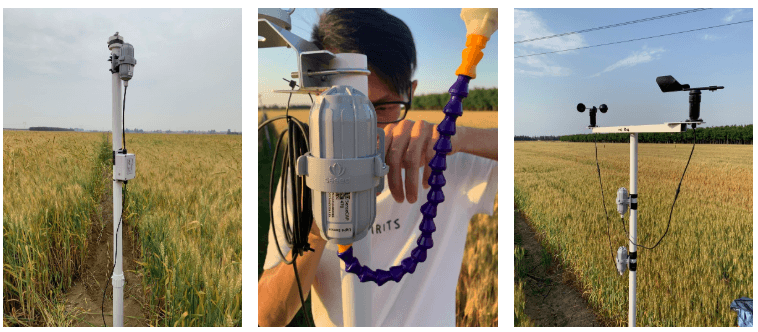
Beishao Triticale Field Project elaborates on a deployment scenario of SenseCAP LoRaWAN gateway and sensors for smart agriculture solutions in a triticale field of Dingzhou City in Northern China. This will advance resource-efficiency, environmental traceability, and sustainable technological applications on the field. As a result, this will facilitate self-empowerment of the farmers to manage their triticale fields more precisely by grasping the crop’s conditions and needs with less labor inputs, and later gain higher yields. Check out the case here.
06 Smart Tea Plantation in Mengding Mountain Enabled by SenseCAP LoRaWAN to Augment Resource Efficiency and Customer Trust for SDGs
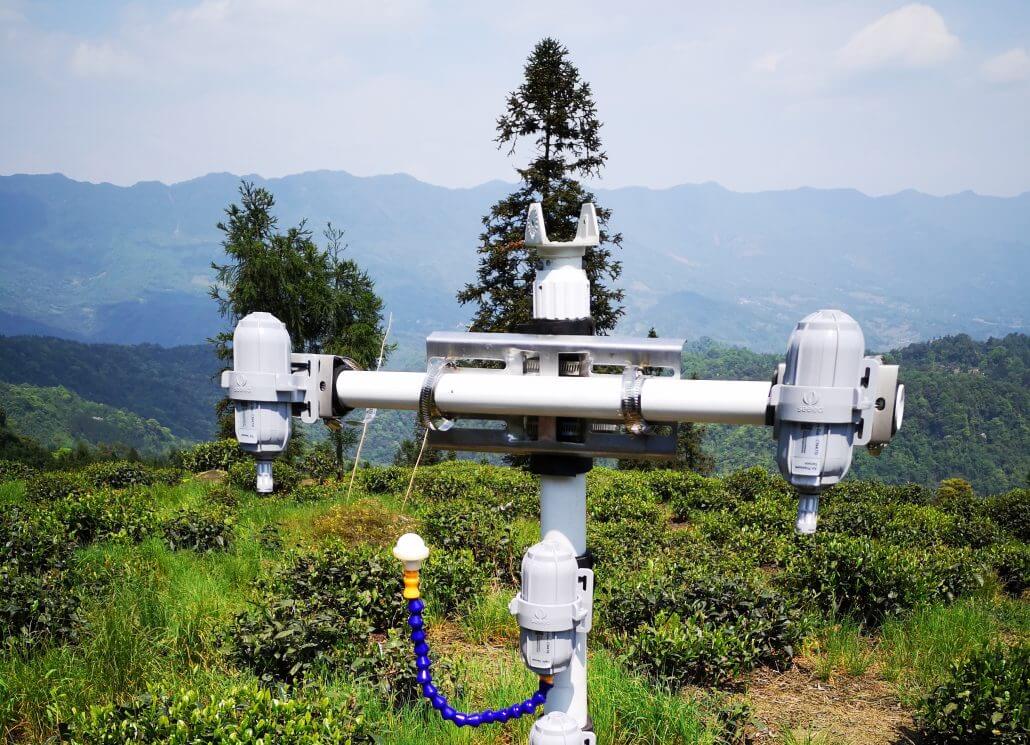
SenseCAP LoRaWAN gateway and sensors were deployed in the IoTea Project to monitor crucial environmental data needed to ensure the optimal tea quality in Ya’an of Southwest China. Through this Project, the overall tea plantation management costs have been lowered, economic yields have been increased, and the tea plantation’s brand image has been upgraded to attract customers who care about food traceability and sustainability. By doing so, the IoTea Project achieves the UN’s SDGs 8, 9, 12, 10, 11, 1, 5, 6, 7, 2, 4, 13, 15, 16 and 17. More details.
 Prototyping and Manufacturing
Prototyping and Manufacturing
01 Seeed Fusion PCBA Customer Story: Tackling Data Gravity with AI and Machine Learning at the Edge with Ergsense
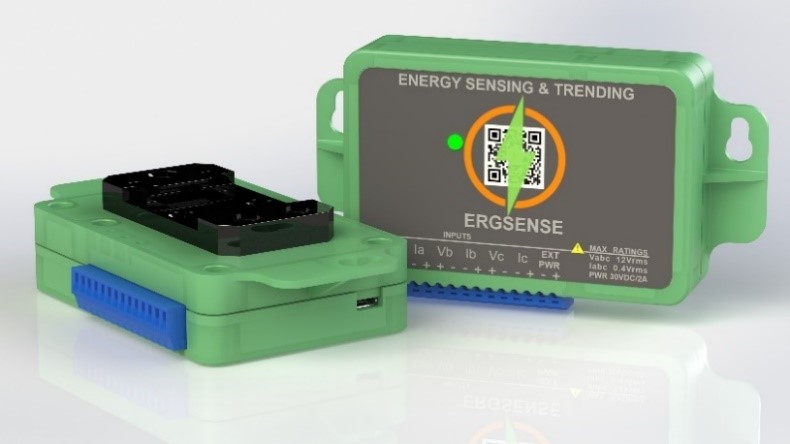
Tomm Aldridge, Founder at Energy Research Group Ergsense, has developed a Detection and Tracking of Energy and Condition Trends System, or DTECTS, a complete software, and hardware solution which utilizes state-of-the-art embedded machine learning and analytics at the edge to drastically slash transmission loads, processing and storage. Seeed Fusion is proud to support for the hardware solution by providing our turnkey PCB Assembly service, contributing to tackling data gravity with AI and Machine Learning at the Edge with Ergsense. Learn more details here.
02 Access SnapEDA CAD Models from Seeed Fusion’s Open Parts Libraries Now
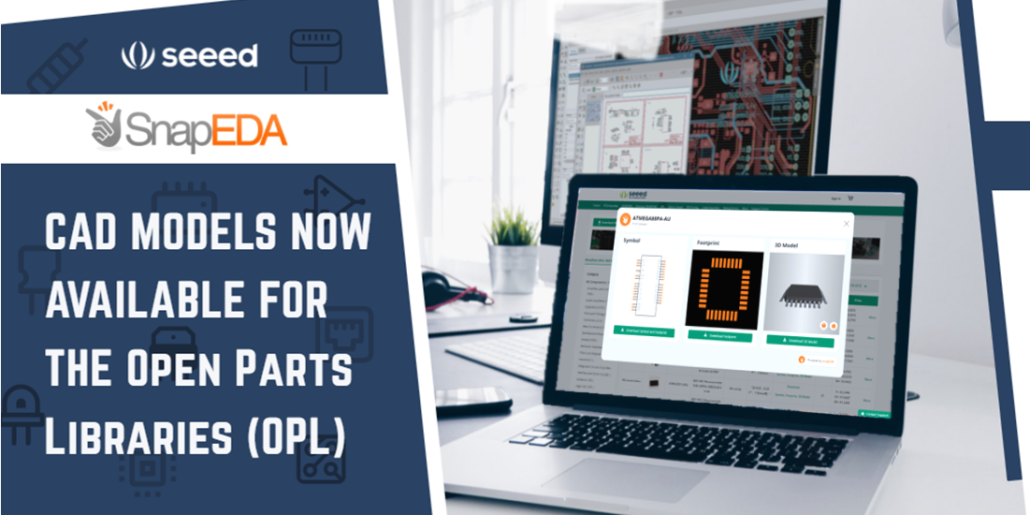
Seeed Fusion are delighted to announce a new partnership with computer-aided design (CAD) model providers SnapEDA, to provide instant access to thousands of CAD modules directly from the Open Parts Libraries (OPL). With SnapEDA approved models, utilizing the Open Parts libraries in your design has never been easier. More details here.
03 Sponsorship: Invigorate your Inspiration for IoT with Wio-E5 and FREE Seeed Fusion PCBA Prototypes
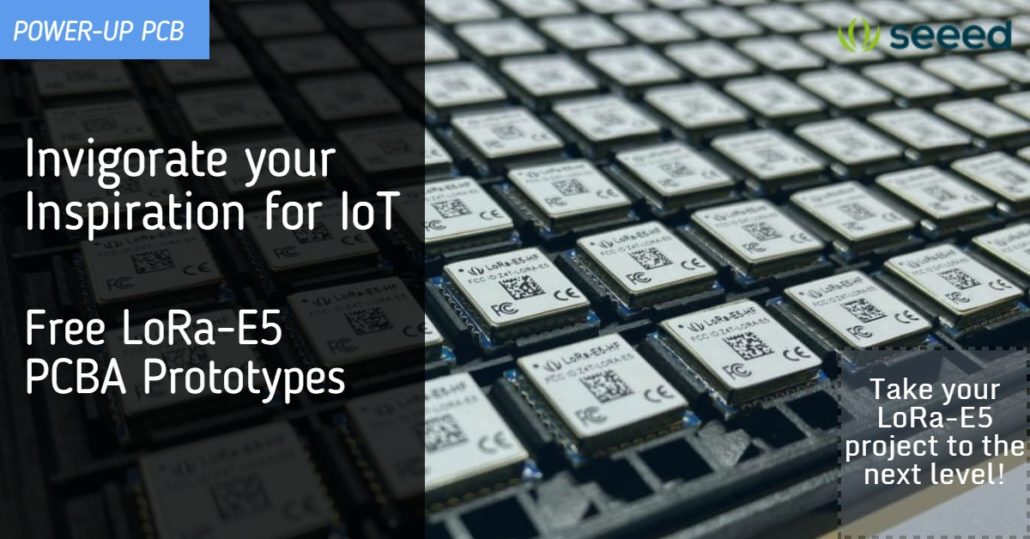
BIG NEWS!! To accelerate the development of IoT, Seeed is sponsoring Wio-E5 projects with the Seeed Fusion PCB Assembly Service for all hardware enthusiasts, designers, makers, and engineers around the world! If you have an interesting concept for Wio-E5 and are willing to share it with the community, you can apply two PCBA boards 100% completely FREE for your Wio-E5 powered design, including PCB fabrication, the cost of parts, assembly, and shipping. Check out the sponsorship details.
Note: The LoRa® Mark is a trademark of Semtech Corporation or its subsidiaries.
#Notes at the end.
If you’re new to this session, here is a brief intro to it. We have gotten dozens of requests over the years for a Seeed Monthly Newsletter. Although we already have a newsletter for weekly updates, we still need a place to host overall information about what’s happened on a monthly basis. It can offer an efficient and friendly way to get updated for the whole community. And that’s what we expect for our Seeed Monthly Wrap-ups. Instead of putting it a subscribe-to-read, we’re publishing them on our blog, keeping it as open and accessible as possible for the whole community. For each entry, we will cover awesome projects from the community, campaigns that we are running, new products, IIoT Solutions and even secret recipes of prototyping and manufacturing.
Previous Entries:
About Author
Lily
Nature lover, baker, cook, DIYer, bug hunter in daily life, and wanna code. Love writing. Words are my natural expression.

